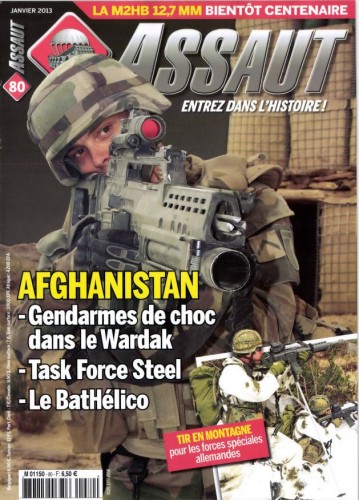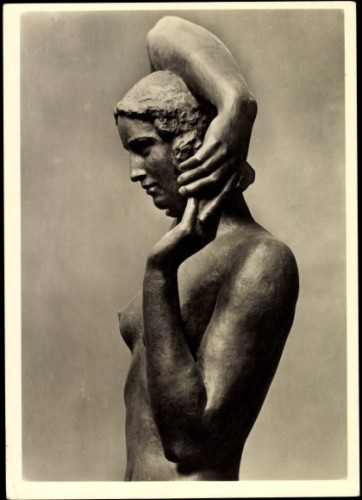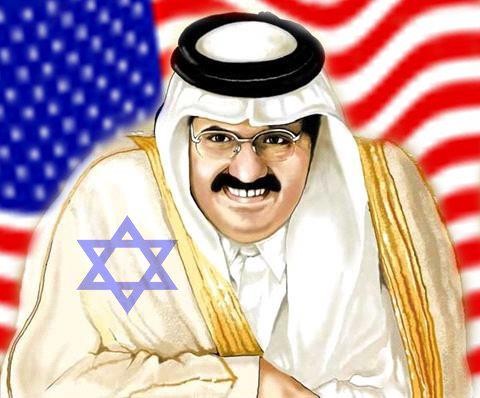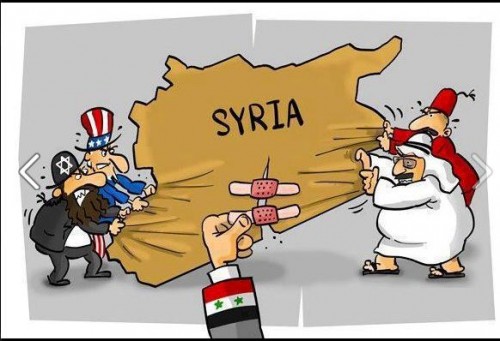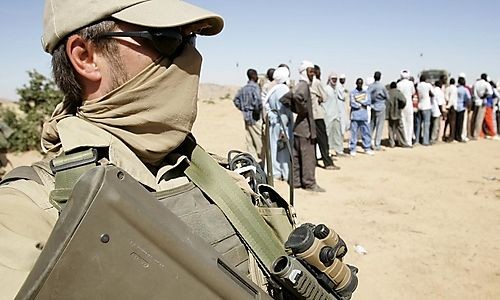La démocratie globale et les fondements postmodernes de la théologie politique
par Jure VUJIC
Ex: http://www.polemia.com/
Polémia présente à ses lecteurs le texte – reçu de l'auteur lui-même – de l'intervention de Jure Vujic lors du séminaire sur « L’ETAT, LA RELIGION ET LA LAÏCITE » organisé par l’Académie de Géopolitique de Paris, dans le cadre des grandes questions géopolitiques du monde d’aujourd’hui, le jeudi 22 novembre 2012 à l'Assemblée nationale. Jure Vujic développe en partie son argumentation sur certains principes retenus par Carl Schmitt, notamment sur la notion de Souveraineté et les rapprochements entre les concepts théologiques et étatiques.
Polémia
________________________________________________________________
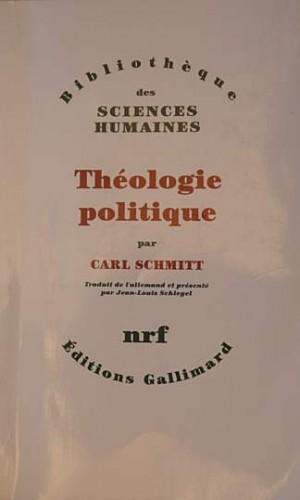 La postdémocratie globale face au défi de la démoi-cratie
La postdémocratie globale face au défi de la démoi-cratie
Avec la globalisation et le phénomène institutionnel de la supranationalité dans l’ordre international, on voit apparaître une nouvelle forme de démocratie globale qui, contrairement aux contours territoriaux et ethno-nationaux bien définis de l’Etat-nation de la modernité, transcende le concept de la souveraineté étatique et de la territorialité comme fondement de la démocratie moderne classique. La démocratie n’est plus le vecteur ni le lieu privilégié de la place publique nationale, la Polis et l’Agora grecques, car en se globalisant et en se dé-territorialisant, elle transfert le débat publique et la sphère publique á un autre niveau transnational et global qu’illustrent si bien les vocables suivants : global marketplace, global communications et global civil society (1).
D'autre part sur le plan du pouvoir politique, la nouvelle « gouvernance globale » impose une dynamique transnationale de dialogue, de négociation et de résolution des conflits. Néanmoins les critiques restent vives á l'égard de cette forme contemporaine de gestion politique suspectée de vouloir instaurer une nouvelle forme de « pouvoir planétaire », de « gouvernement mondial » et d'être l'instrument privilégié de l'uniformisation néolibérale économique et financière. La gouvernance globale serait en quelque sorte l'incarnation d'un « leviathan mondial », dont les ressorts néospirituels et théologiques du gouvernement mondial proviendraient de la constitution d'Anderson et des textes fondateurs du messiannisme universaliste étatsunien. Parallèlement au développement de cette gouvernance globale s'accroît le pouvoir planétaire de la « médiacratie » et l'emprise des mass-médias, conjuguée á celle de l'industrie de l'entertainement, la société de spectacle Debordienne, les stratégies de séduction de Lyotard constituent aujourd'hui les piliers de ce qu'Habermas nomme « la servitude volontaire » et de la re-féodalisation sociale .
Raison instrumentale et hybris globale
Il semblerait qu'en dépit de son voile technoscientiste et hyperrationnaliste, la démocratie politique globale constitue en fait un véritable laboratoire de l'esprit, comme l'appelait Julien Benda, dans lequel on s'efforce de générer, sur des fondements constructivistes et séculiers et paradoxalement néothéologiques, une nouvelle forme d'identité globale, un « readymade d'identité » consommable, jetable et interchangeable comme symbole d'un processus d'« a-culturation globale ». L'argument iréniste du déclin de la conflictualité et de l'éradiction de la guerre semble être un leurre face á la montée des extrémismes et ethnoconfessionnels en Europe occidentale et dans le monde entier et l'intensification des dispositifs identitaires et guerriers á l'échelle globale. La « raison instrumentale » déifiée par les Lumières et la sécularisation moderne d'aujourd'hui semblent constituer dans leur forme radicale le levier le plus pussissant d'un processus de re-théologisation de la politique globale. En effet, lorsqu' Habermas opposait la « raison supra-nationale » á la « passion nationale » dans le cadre de la construction européenne, il ne se doutait sans doute pas que le fondamentalisme séculier ou « sécularisé » contemporain et l'idolâtrie néolibérale du marché engendreraient á l'échelon mondial la volonté d'imposer manu militari le modèle de la démocratie de marché, et, avec l'interventionnisme botté de type Wilsonien des Etats-Unis en tant que « gendarme bienveillant du monde », une nouvelle forme d'irrationalité supranationale, reflètant un certain Eros globaliste démesuré. Ici les rôles sont inversés: la figure dionysiaque et érotique du national qui coïncide á la période pré-moderne selon Joseph Walter semble céder la place á une postmodernité globalisante, qui, loin d'être synonyme d'une civilisation policée et mesurée sous la forme d'un néohumanisme rénové, revêt les formes de l'« hybris » polémogène d'une néo-impérialité théologique conquérante. L’ensemble du projet des Lumières, qui s’est répandu en Europe occidentale et de par le monde entier du XVIIIe siècle jusqu’à nos jours, avait pour objet principal de « séculariser » la politique afin d’en extraire les éléments religieux, absolutistes et théologiques. Carl Schmitt constata á merveille, dans la Théologie politique, que l’ensemble des principes politiques modernes contemporains constituent des concepts théologiques sécularisés. En effet, l’expansionnisme parfois violent de ce que l’on appelle le fondamentalisme du marché et l’intégrisme séculier génère en quelque sorte les nouvelles formes de replis identitaires et ethnoconfessionnels sous forme d’intégrisme national et religieux.
La modélisation de l'espace géopolitique entre ingénierie et sacralité
En effet, en matière géopolitique, la re-théologisation des visions et des stratégies politiques passent par la classification et la réduction de l'espace « rival » « hostile » « polémogène » á une « zone chaotique », á une zone soumise á un traitement de l'ingénierie sociale. L'ensemble de l'espace mondial reste sujet á une modélisation et á un formatage géoconstructiviste croissant. Cette grille de lecture et de traitement binariste voire manichéenne du pouvoir dans les relations internationales en vient á classer, selon un mode discriminatoire et dogmatique, les cartes géopolitiques selon une gradation des menaces et de la nature des régimes politiques hostiles en place : les « Etats parias », les « Etats voyous », « les Etats désobéissants », qui deviennent des zones de guerre, des zones d'ingénierie para-gouvernementale, alors que les zones de marchés émergents deviennent des zones d'ingénierie financière globales. A ce titre R. Cooper parle de « zones chaotiques pré-historiques et pré-modernes », dans lesquelles les pouvoirs de la postmodernité démocratique sont appelés á intervenir pour imposer la paix, la stabilité et la démocratie de marché, et cela toujours au nom de ce vieux fond religieux d'absolutisation du projet et du modéle sociopolitique occidental. A ce titre, cette classification n'est pas sans rappeler la géographie sacrée et biblique qui fait référence aux terres barbares, « terres d'impies ». La constitution et l'émergence d'un seul et unique peuple « demos » global reste encore un lointain projet, dans la mesure où il se heurte á la pluralité ethnique, anthropologique et culturelle des « demoi », des peuples singuliers, qui s'inscrivent dans de longues continuités historiques, organiques spatiotemporelles. Les projets Habermasiens d'un « patriotisme constitutionnel », le projet Kantien de « paix perpétuelle » ainsi que l'universalisme Wilsonien incarné par la Société des Nations, souffrent d'une grave carence constructiviste et mécaniciste, car ils procèdent de cette croyance irrationnelle en la séparation du demos de l'ethnos, afin de soustraire l'identité á l'histoire et ouvrir la voie vers une forme d'identité postnationale déconnectée de toutes références territoriales et historiques. Avec ce phénomène de re-théologisation de la politique, la démocratie de marché impérative et conquérante prend les formes d'une « demoi-cracy » détachée dun pôle territorial et organique légitimisant, pour constituer une sorte de matrice néo-impériale expérimentale. A ce titre il semblerait plus sage, dans ce processus de globalisation de la démocratie, d'éviter les écueils d'une contrainte verticale d'uniformisation imposée d'en haut et du « dehors » et, comme le préconise Nicolaidis, appliquer une approche dialogique horizontale entre Etats souverains, qui se reconnaissent dans le modèle d'une « démo-krateo » participative et ethnodifférentialiste, qui conjugue des intérêts similaires et complémentaires.
Sotériologie et « rêve unitariste »
La modernité occidentale a marqué le passage d’une interprétation transcendentale et magico-théologique de la politique vers une forme immanente, rationaliste et constructiviste de la politique. Cependant malgré cette mutation épistémologique, les références religieuses subsistent á l’état latent ou manifeste dans la politique contemporaine. A ce titre M. Gauchet remarque que « les trois idoles du libéralisme: nation, progrès et science » reposent sur une extension du religieux dans le domaine politique en tant que nouvelle sotériologie séculière, recherchant le salut dans la société du marché et du bien-être. La parousie linéaire et progressiste vers l’accomplissement du bonheur terrestre et du bien-être matériel et social constitue ici la transposition de la parousie linéaire eucharistique et religieuse. L'avènement de l'« âge organisationnel » qui a préfiguré la refondation d'un monde « sans maître » et qui a tenté d'expurger le domaine du politique des ressorts pré-modernes, a par voie de conséquence ouvert la voie á une phase libérale que Marx appellera « l'âge orgiastique ». La séparation de la société de l'Etat, la disparition des corps communautaires intermédiaires évoqués par F. Tonnies, ainsi que la dispartion de la communauté organique au profit de la vision sociétaire et contractuelle (Durkheim), s'incrivent dans le droit fil de la « dé-théologisation et la dé-mythification de l'histoire » depuis l'âge des Lumières jusqu'à nos jours. Les théoriciens de l'Etat, Jellinek, Esmein et Hauriou ainsi que Carré de Malberg remarqueront que ce passge vers une nouvelle forme d'ordre étatique se fonde sur l'abstraction et l'impersonnalité des structures législativo-administratives (venant parachever les thèses Weberienne sur la légitimité légale du pouvoir politique) assurant la continuité et l'efficience de l'Etat. Néanmoins la fascination de l'« Unité », le « rêve unitariste », ne disparaîtra pas du domaine politique puisque le globalisme s'évertuera á promouvoir un monde uniforme autocentré, auto-réferentiel (« le One World »), fondé sur une unité constructiviste et mécanique. Ce rêve unitariste est un des avatars du fameux « désenchantement du monde » Weberien en tentant d'unifier l'ethos et le logos politique, l'économicisme et la raison instrumentale avec le discours émancipateur. La nouvelle postdémocratie libérale souffre d'un grave handicap de représentativité et d'organicité, car, en ayant dénaturé les assises organiques de la démocratie moderne ou pré-moderne, elle a indéniablement détaché le « demos » de la notion de « demoi » porteur de visions singulières du monde et de culture politique spécifique, consacrant le règne de la « politique anonyme ».
Le retour du religieux et la théologie sociétale
Néanmoins le monde contemporain reste confronté au phénomène du « retour du religieux » dans la sphère sociale et politique. Ce phénomène est vérifiable au niveau global : intégrisme islamique, néoconfucianisme en Chine communiste, l'émergence des Asian Values et de l'Hinduistan en Inde et en Asie. La redécouverte du religieux en tant que facteur d'intégration individuelle et collective semble jouer un rôle supplétif parallèlement au déclin des idéologies politiques classiques et à la juridicisation et la technicisation de la politique. Si l'on prend en compte la recrudescence du phénomène religieux en politique aux Etats-Unis où le fondamentalisme chrétien protestant a toujours fait bon ménage avec la politique et les signes d'une certaine « resacralisation » du politique en Russie et dans certains pays européens, on constate que le processus irréversible de la sécularisation du politique est loin d'être fini et l'on assiste paradoxalement á l'avènement d'une société « post-séculaire » caractérisée par un retour du fondamentalisme et d'une instrumentalisation du concept de conflit de civilisation. La sécularisation marquée par un processus d'autonomisation du politique et du domaine social et économique par rapport à la sphère religieuse qui s'est opéré depuis la Révolution francaise (l'Ancien Régime) et dans le sillage l’Aufklärung, a abouti á une neutralisation et une rationalisation du politique qui s'est émancipé du rôle social et organisationnel de l'Eglise et du religieux. Pour le juriste Carl Schmitt, le catholicisme doit être considéré comme le fondement de l’État moderne dans la mesure où tous les concepts de la doctrine moderne de l'État sont des concepts théologiques sécularisés. La théologie est donc par nature politique et l’Église un corps politique car, qu'elle le veuille ou non, elle ne peut pas ne pas produire des effets sur la structuration de la société et de l'État dans lesquels elle est insérée. Contrairement á Carl Schmitt, le théologien d’origine protestante Érik Peterson se refuse á reconnaître la légitimation théologique d’une forme d'organisation politique justifiant une attitude de « résistance critique ».
Le caractère irréversible d'autonomisation et d'affranchissement du politique de la sphère religieuse semble souvent, commme le souligne le sociologue Jose Casanova (2), partiellement vrai, car, selon lui, il semblerait légitime de parler d’une sécularisation irréversible de nos sociétés dans le cas des Églises établies (c’est-à-dire officiellement incorporées à l’appareil d’État) lesquelles sont devenues incompatibles avec les États modernes différenciés. Ainsi, « la fusion de la communauté religieuse et de la communauté politique est incompatible avec le principe moderne de la citoyenneté, ce qui rejette toute possibilité de théologie politique. Néanmoins toujours selon Casanova dans le cas des Églises qui auront accepté ce désétablissement et se seront approprié le cadre et les valeurs fondamentales de la modernité, il existerait la possibilité pour ces religions non établies de jouer un rôle social. Casanova parle de « déprivatisation » plutôt que de « sécularisation » . Il y aurait donc une place pour le statut des « religions publiques » pour les traditions religieuses qui auront renoncé à la fusion de la communauté politique et de la communauté religieuse. Dans ce cas, cette transformation implique le renoncement à toute « théologie politique » au sens strict, au profit d’une théologie « sociétale ».
Exégèse et questionnement sur la (dé)-sécularisation
La sécularisation et la théologie ont entretenu pendant des décennies des relations incestueuses, s’étant mutuellement imprégnées. D’autres penseurs, Jürgen Moltmann ou Jean-Baptiste Metz, ont reconnu le phénomène de sécularisation du religieux en reconnaissant dans la Croix de Jésus un symbole politique. Nombreuses sont les analyses sociologiques de C. Schmitt, Giorgio Agamben et de M. Foucault sur la biopolitique, qui voient dans la théologie chrétienne la source structurante du pouvoir étatique moderne. Hans Blumberger mettra l’accent sur une certaine puissance d’auto-affirmation de la modernité pour la libérer de l’emprise théologico-politique. La question de la sécularisation-religion et le dilemme contemporain relatif à la (dé-)sécularisation ont imprégné les travaux d’Augustin, d’Eusèbe de Césarée, de Maïmonide, de Averroès, des auteurs conservateurs comme de Maistre, Bonald, Donoso Cortés et les philosophes de la contre-Révolution, en passant par Spinoza et au XXe siècle des philosophes tels que Löwith, Strauss, Benjamin, Voegelin et Vattimo. La réflexion sur la Shoah et Auschwitz réhabilitera dans le champ épistèmologique et philosophique la théologie politique, surtout lorsque celle-ci s’applique à la nature eschatologique et nihiliste des régimes totalitaires. Le sociologue allemand Hans Joas (3) dans La foi en tant qu'option (Glaube als Option) juge la laïcité et la sécularisation sociale compatibles avec la religion, en pariant sur le rôle intégrationniste et social de la foi en tant que choix individuel et option. Il constate aussi que l'idée de sécularisation et de progrès s'est cristallisée et a évolué á travers plusieurs phases : après s'être imposée en tant que modèle social en Europe occidentale dans les années 1950 et 1960, elle a évolué à travers la théorie de la modernisation occidentale présentée aux Etats-Unis comme le modèle historique. Le regain du religieux dans le domaine social et politique réapparaît selon lui et de façon paradoxale á l'époque de la postmodernité ouù règne un certain polythéisme des valeurs, á l'époque de « la fin des grands récits » qu'annonçait Lyotard, fin époquale á laquelle Hans Joas ne veut pas croire. Joas enfin voit dans le phénomène de l'autotranscendance individuelle et collective une manifestation du religieux social, qui, déconnectée d'un unique centre théologique de référence, permet le foisonnement et l'affirmation d'identités multiples. Ainsi la laïcité et le processus de sécularisation seraient selon lui un phénomène contingent issu d'un contexte social et historique précis. Tout comme la religion Joas affirme que la sécularisation n'est pas une nécessité impérieuse et irréversible.
Sécularisation des idées et « sortie de religion »
La sécularisation contemporaine est multidimensionnelle, car si elle est surtout comprise dans le sens politique (la séparation de l’Église et de l’État), elle tire sa légitimité pratique du domaine sociologique et surtout idéel. En effet, elle a coïncidé avec le vaste phénomène du « désenchantement du monde » et le déclin des croyances religieuses traditionnelles. Avec la relativisation nivelleuse des croyances et le relativisme épistémologique (la religion est une affaire privée et équivaut á n’importe quel autre choix), la sécularisation a permis d’insérer la pensée théologique et religieuse dans le domaine profane. Et par une sorte d’inversion, le profane est devenu sacré. C’est ce que le sociologue Wendrock a constaté lorsqu’il démontre que le concept de « volonté générale » rousseauiste coïncide avec le concept théologique de la « volonté générale de Dieu » que l’on attribue aux jansénistes. Les idées séculières de justice, d’égalité, de salut et de libération sont consubstantielles á l’idée de démocratie, et constituent de même des reliquats de la pensée théologique. Certains auteurs, comme Rémi Brague, critiquent la sécularisation des idées, afin de démontrer que seul le christianisme est en mesure de conserver la cohérence de la morale sociale. Charles Taylor (4) dans A Secular Age affirme que « le christianisme s’accommode de la sécularisation sans perdre sa substance, son message transcendental ». Il n’est pas certain, d’autre part, que comme le soutient Kolakowski les religions garantissent contre le projet d’un « accomplissement terrestre radical et absolu », car certaines idéologies ultraséculières comme le marxisme et a-religieuses contiennent comme l’a démontré le philosophe Mihael Riklin les matrices quasi religieuses d’une pensée sotériologique en tant que promesse d’une utopie communiste réalisée, á savoir l’accomplissement de la société communiste sans classe. Tous les totalitarismes modernes de droite et de gauche ont emprunté á la religion l’idée de salut et d’émancipation. Le projet totalitaire reste donc émminemment « religieux » dans sa forme et ses buts, tout en empruntant les moyens de persuasion et de coercition sécularisés (la soumission passive, l’internalisation et le conditionnement). De sorte que le projet global d’une humanité uniforme consumériste unifiée par le marché et la communication mondiale prend la forme d’un projet religieux séculier, qui par le biais de la promesse de la société planétaire du bonheur et du bien-être matériel généralisé entend « sortir de l’histoire » tout comme la religion se présente comme un message « transhistorique ». Le projet global politique, économique et culturel, contient les germes d’une re-spiritualisation du politique, car contrairement aux thèses « endistes » d’un Fukuyama ou d’un Gauchet, il ne s’agit pas d’une « sortie de religion » qui marquerait le destin de l’Occident, mais bien au contraire d’un besoin de religion, besoin qui se fait de plus en plus sentir sur les marges paupérisées et la périphérie globale, qui réclame plus de justice et d’égalité.
Jure Georges Vujic
avocat, géopoliticien et écrivain franco-croate
Séminaire sur « L’Etat, la Religion et la laïcité »
Académie de Géopolitique de Paris
22 novembre 2012
Notes :
(1) E. Stiglitz, La Grande Désillusion, Paris Fayard, 2002.
(2) Jose Casanova, Public Religions in the Modern World. (1994)
(3) Hans Jonas, Die Kreativität des Handelns, Frankfurt, Suhrkamp, 1992 ; traduction française: La Créativité de l'agir, traduit de l'allemand par Pierre Rusch (titre original : Die Kreativität des Handelns, 1992), Paris, coll. Passages, Les éditions du Cerf, 1999
(4) Charles Taylor, A Secular Age, Harvard University Press. (2007)
NDLR : Le lecteur sera peut-être surpris que Polémia ait choisi, pour illustrer l’article de Jure Vujic, le livre de Carl Schmitt Théologie politique, mais il se souviendra que, dans la théorie du juriste et philosophe Carl Schmitt, la théologie politique est une pièce essentielle pour l'interprétation de la nature du politique : « Presque tous les concepts prégnants de la théorie moderne de l'Etat sont des concepts théologiques sécularisés. »
Dernier livre de Jure Vujic, La modernite à l'epreuve de l'image - L'obsession visuelle de l'Occident, Editions l'Harmattan, octobre 2012, 185 pages.
Bibliographie :
LABORDE, C., 2007, Some reflections on European Civic Patriotism, in Simon Piattoni and Riccardo Scartezzini (éd.), European Citizenship : Theories, Arenas, Levels, Edward Elgar.
LACROIX, J., 2002, For a European Constitutional Patriotism, Political Studies, vol. 50.
MAGNETTE, P., 2006. Au nom des peuples : le malentendu constitutionnel européen, Paris : Les éditions du Cerf.
MARKELL, P., 2000. Making affect safe for democracy ? On ‘constitutional patriotism, Political Theory, vol. 28, n° 1, february.
MULLER, J.W., 2004, Europe : le pouvoir des sentiments. L’euro-patriotisme en question, La République des idées, avril-mai.
NICOLAIDIS, K., 2006, Notre Demoi-cratie européenne : La constellation transnationale à l’horizon du Patriotisme Constitutionnel, Politique Européenne, n° 19, printemps.
RAMBOUR, Muriel, 2005. Postnationalisme et intégration politique communautaire. Réflexions sur l’avenir de l’État-nation face à la construction européenne, Lille, Atelier national de reproduction des thèses.
STERNBERGER, D, 1990. Verfassungspatriotismus, Frankfurt : Insel.
STIGLITZ E,2002, La grande désillusion, Paris Fayard.
TASSIN, E., 1994, Identités nationales et citoyenneté politique, Esprit, janvier.
JOAS H., Die Kreativität des Handelns, Frankfurt, Suhrkamp, 1992 ; traduction française: La Créativité de l'agir, traduit de l'allemand par Pierre Rusch (titre original : Die Kreativität des Handelns, 1992), Paris, coll. Passages, Les editions du Cerf, 1999
BRUCE, Steve. God is Dead: Secularization in the West (2002)
CASANOVA, Jose. Public Religions in the Modern World, (1994)
CHAVES M. Secularization As Declining Religious Authority, Social Forces 72(3):749–74. (1994)
GAUCHET, Marcel. The Disenchantment of the World, (1985/tr. 1997)
MARTIN David. A General Theory of Secularization, New York: Harper & Row. (1979).
SAID , E. Orientalism: Western Conceptions of the Orient, London: Penguin. (1978).
TAYLOR , Charles. A Secular Age, Harvard University Press. (2007)
CROUCH, C., 2004, Post-democracy, First Edition.
FERRY, J. M., 2002. La référence républicaine au défi de l’Europe, Pouvoirs, n° 100.
GAUCHET M., 2007, L’Avènement de la démocratie, Paris, Gallimard, Bibliothèque des sciences humaines.
HABERMAS, J., 1989. A kind of settling of damages, in WEBER N. S. (éd), The New Conservatism. Cultural Criticism and The Historians’Debate, Cambridge : Polity Press.
HABERMAS, J. 2000, Après l’Etat-nation, Paris Fayard,.
HABERMAS, J., DERRIDA, J., 2003. Europe : plaidoyer pour une politique extérieure commune , Libération, 31 mai et 1er juin. HELD S., 1997. Globalization and cosmopolitian democracy, Peace Review
Articles :
Rémi Brague, Pour une métaphysique de base » in Regards sur la crise. Réflexions pour comprendre la crise et en sortir, ouvrage collectif dirigé par Antoine Mercier Paris, Hermann Editions 2010.
Globalisation et deficit de legitimite democratique: faut-il souhaiter une democratie cosmopolitique?, Francois Boucher, Universite Laval, archives Phares, volume 7, 2007.
Jan-Werner Muller Europe : Le pouvoir des sentiments: l'euro-patriotsime en question, La Republique des Idees, 2008.
Ingolf Pernice, Franz Mayer, De la constitution composée de l'Europe, Walter Hallstein-Institut, Revue trimestrielle de droit europeen 36, 2000.
Review: Marcel Gauchet, L’Avènement de la démocratie, Paris, Gallimard, Bibliothèque des sciences humaines, 2007 ; vol. I, La Révolution moderne, 207 p., 18,50 € et vol. II, La Crise du libéralisme.
Correspondance Polémia – 9/01/2013





 del.icio.us
del.icio.us
 Digg
Digg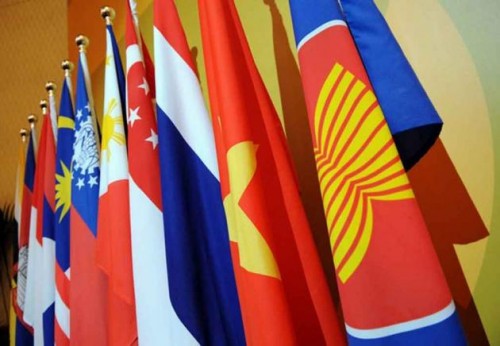
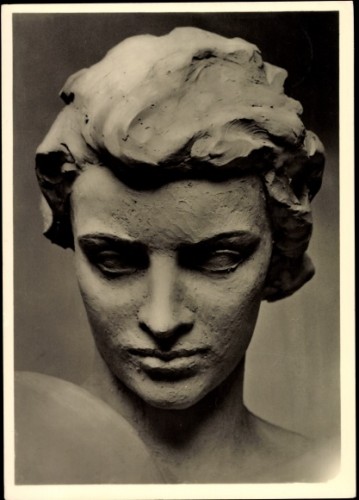



 Carl Schmitt fut un élément du régime nazi durant la Seconde Guerre mondiale quand Julien Freund, étudiant en philosophie, entrait en résistance très tôt. Si leurs œuvres sont marquées par les vicissitudes d’une époque particulière, elles les surpassent toutefois pleinement. L’angle sous lequel ils en viennent à penser la relation ami/ennemi tire sa force d’une double volonté d’extraction et d’abstraction de ce contexte. Il est intéressant de remarquer que, par delà les oppositions de l’Histoire, une certaine communauté de destin relie Freund et Schmitt : exclus par les clercs de leur vivant, ils sont aujourd’hui progressivement tirés des limbes où de mauvais desseins et d’éphémères raisons les avaient placés.
Carl Schmitt fut un élément du régime nazi durant la Seconde Guerre mondiale quand Julien Freund, étudiant en philosophie, entrait en résistance très tôt. Si leurs œuvres sont marquées par les vicissitudes d’une époque particulière, elles les surpassent toutefois pleinement. L’angle sous lequel ils en viennent à penser la relation ami/ennemi tire sa force d’une double volonté d’extraction et d’abstraction de ce contexte. Il est intéressant de remarquer que, par delà les oppositions de l’Histoire, une certaine communauté de destin relie Freund et Schmitt : exclus par les clercs de leur vivant, ils sont aujourd’hui progressivement tirés des limbes où de mauvais desseins et d’éphémères raisons les avaient placés.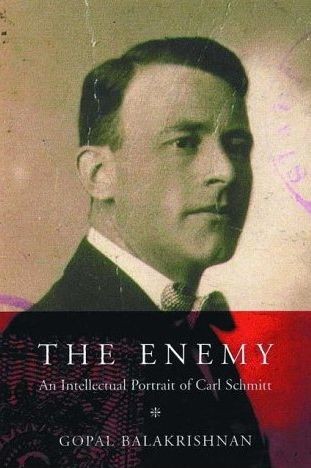 S’il est nécessaire de ne jamais remettre en cause les acquis de la paix et de toujours se battre pour elle, il faut pourtant se défaire des illusions que véhicule un certain pacifisme des esprits. Une nation insérée dans le jeu mondial doit, pour survivre, identifier ses ennemis. Car elle ne peut pas ne pas en avoir. La difficulté réside dans le fait que l’ennemi est aujourd’hui plus diffus, plus retors. Il se masque, déguise ses intentions, mais n’est ni irréel ni désincarné. Sa forme évolue sans cesse et ne se réduit plus à l’unique figure étatique. Dans tout nouvel acteur (entreprise, ONG…) sommeille une inimitié possible. A l’inverse, certains pays recherchent un ennemi de manière forcenée. C’est le cas des Etats-Unis, en particulier avec l’Irak et de manière générale dans toute leur politique extérieure depuis 1990.
S’il est nécessaire de ne jamais remettre en cause les acquis de la paix et de toujours se battre pour elle, il faut pourtant se défaire des illusions que véhicule un certain pacifisme des esprits. Une nation insérée dans le jeu mondial doit, pour survivre, identifier ses ennemis. Car elle ne peut pas ne pas en avoir. La difficulté réside dans le fait que l’ennemi est aujourd’hui plus diffus, plus retors. Il se masque, déguise ses intentions, mais n’est ni irréel ni désincarné. Sa forme évolue sans cesse et ne se réduit plus à l’unique figure étatique. Dans tout nouvel acteur (entreprise, ONG…) sommeille une inimitié possible. A l’inverse, certains pays recherchent un ennemi de manière forcenée. C’est le cas des Etats-Unis, en particulier avec l’Irak et de manière générale dans toute leur politique extérieure depuis 1990. 






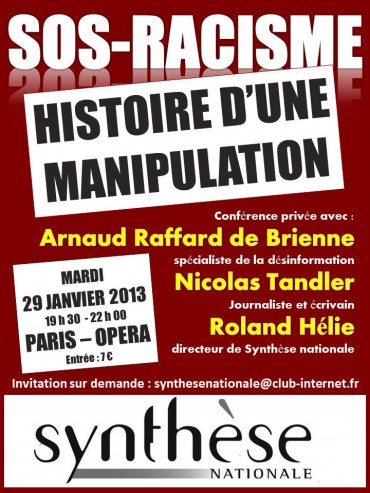
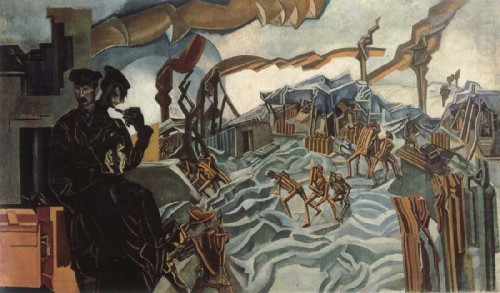
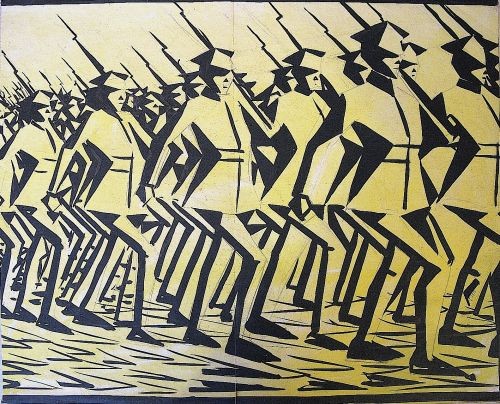
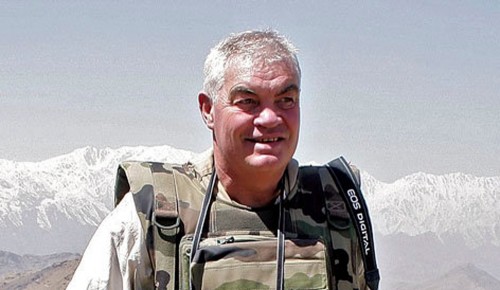
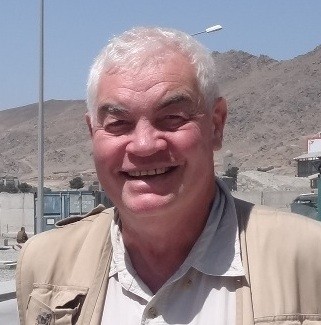 Bref, dans notre école, nous étions la bande des “Pas-comme-les-autres”, même si Leyssens, Beerens et moi étions en apparence parfaitement “scolaires”. Debay ne l’était évidemment pas. Il sentait en lui l’appel de l’action et du grand large. Chassé de l’école après un coup fumant, qu’il narre d’ailleurs à demis mots dans le bulletin des “Amis de Jean Mabire”, Debay quitte notre institut sans regret, tout comme nous qui aspirions à autre chose, et s’inscrit à l’école “toutes armes” de Sainte-Anne à Laeken. Après sa période d’instruction et de formation, il rejoint en Allemagne le “2ème Chacha” (= “Chasseurs à Cheval”), une unité blindée équipée de petits chars britanniques de type “Scorpion”. Dans sa garnison, proche du Rideau de Fer, Debay s’est forcément ennuyé. La vie quasi courtelinesque des casernes en temps de paix, renforcée encore par le surréalisme congénital et souvent éthylique des “gamelles” belges, n’était pas faite pour lui, qui avait d’ailleurs, en plus, la nostalgie de son Afrique natale. Il se porte volontaire en Rhodésie dans l’armée de Ian Smith, où il commande une unité d’infanterie africaine engagée contre les Mozambicains qui recevaient, à l’époque, des armes soviétiques. Debay est revenu en 1979, en pleine campagne électorale pour l’élection du premier Parlement européen. La Sûreté de l’Etat belge avait interdit de parole Giorgio Almirante, pourtant candidat, et Blas Piñar, venu de Madrid pour le soutenir: les deux hommes politiques devaient expliciter leurs programmes et intentions dans les salons de l’Hôtel Métropole. Les gauchistes avaient rameuté leur ban et leur arrière-ban et occupaient le centre de la ville, menaçant de prendre d’assaut le local du futur “Parti des Forces Nouvelles”, le long du canal, où Almirante et Piñar devaient se replier (ce qu’il ne firent pas). Quelques journalistes, dont Alain Derriks que j’accompagnais, étaient présents sur place. Y compris une délégation du “Parti Ouvrier Européen”, téléguidé par Lyndon LaRouche et son épouse allemande, et qui tentait de nous démontrer que Khomeiny était un agent de l’Intelligence Service. Près de trois cents personnes étaient rassemblées près du local, pour le défendre en cas d’attaque: du jamais vu dans les annales de la “droite” musclée en Belgique. Debay n’avait évidemment pas résisté au désir de venir sur place, alléché par la perspective d’une immense bagarre de rue. Ce furent de joyeuses retrouvailles. Dans sa malette, Debay avait des photos de Rhodésie, dont celles de son ordonnance, un géant noir avec la poitrine couverte de chaînes de munitions pour sa .30, qu’il portait avec autant d’aisance qu’un gentleman de la City trimbale son riflard. Debay a évoqué ce jour-là un engagement de son peloton: les Mozambicains, armés de mortiers soviétiques, avaient déclenché le combat en canardant les Rhodésiens mais sans régler la hausse de leurs pièces. Ils tiraient 600 m trop loin. Debay avait ordonné l’assaut, baïonnette au canon: les Mozambicains continuaient à tirer et s’étonnaient que les Rhodésiens et leur grand diable de chef blanc ne tombaient pas comme des mouches...
Bref, dans notre école, nous étions la bande des “Pas-comme-les-autres”, même si Leyssens, Beerens et moi étions en apparence parfaitement “scolaires”. Debay ne l’était évidemment pas. Il sentait en lui l’appel de l’action et du grand large. Chassé de l’école après un coup fumant, qu’il narre d’ailleurs à demis mots dans le bulletin des “Amis de Jean Mabire”, Debay quitte notre institut sans regret, tout comme nous qui aspirions à autre chose, et s’inscrit à l’école “toutes armes” de Sainte-Anne à Laeken. Après sa période d’instruction et de formation, il rejoint en Allemagne le “2ème Chacha” (= “Chasseurs à Cheval”), une unité blindée équipée de petits chars britanniques de type “Scorpion”. Dans sa garnison, proche du Rideau de Fer, Debay s’est forcément ennuyé. La vie quasi courtelinesque des casernes en temps de paix, renforcée encore par le surréalisme congénital et souvent éthylique des “gamelles” belges, n’était pas faite pour lui, qui avait d’ailleurs, en plus, la nostalgie de son Afrique natale. Il se porte volontaire en Rhodésie dans l’armée de Ian Smith, où il commande une unité d’infanterie africaine engagée contre les Mozambicains qui recevaient, à l’époque, des armes soviétiques. Debay est revenu en 1979, en pleine campagne électorale pour l’élection du premier Parlement européen. La Sûreté de l’Etat belge avait interdit de parole Giorgio Almirante, pourtant candidat, et Blas Piñar, venu de Madrid pour le soutenir: les deux hommes politiques devaient expliciter leurs programmes et intentions dans les salons de l’Hôtel Métropole. Les gauchistes avaient rameuté leur ban et leur arrière-ban et occupaient le centre de la ville, menaçant de prendre d’assaut le local du futur “Parti des Forces Nouvelles”, le long du canal, où Almirante et Piñar devaient se replier (ce qu’il ne firent pas). Quelques journalistes, dont Alain Derriks que j’accompagnais, étaient présents sur place. Y compris une délégation du “Parti Ouvrier Européen”, téléguidé par Lyndon LaRouche et son épouse allemande, et qui tentait de nous démontrer que Khomeiny était un agent de l’Intelligence Service. Près de trois cents personnes étaient rassemblées près du local, pour le défendre en cas d’attaque: du jamais vu dans les annales de la “droite” musclée en Belgique. Debay n’avait évidemment pas résisté au désir de venir sur place, alléché par la perspective d’une immense bagarre de rue. Ce furent de joyeuses retrouvailles. Dans sa malette, Debay avait des photos de Rhodésie, dont celles de son ordonnance, un géant noir avec la poitrine couverte de chaînes de munitions pour sa .30, qu’il portait avec autant d’aisance qu’un gentleman de la City trimbale son riflard. Debay a évoqué ce jour-là un engagement de son peloton: les Mozambicains, armés de mortiers soviétiques, avaient déclenché le combat en canardant les Rhodésiens mais sans régler la hausse de leurs pièces. Ils tiraient 600 m trop loin. Debay avait ordonné l’assaut, baïonnette au canon: les Mozambicains continuaient à tirer et s’étonnaient que les Rhodésiens et leur grand diable de chef blanc ne tombaient pas comme des mouches...